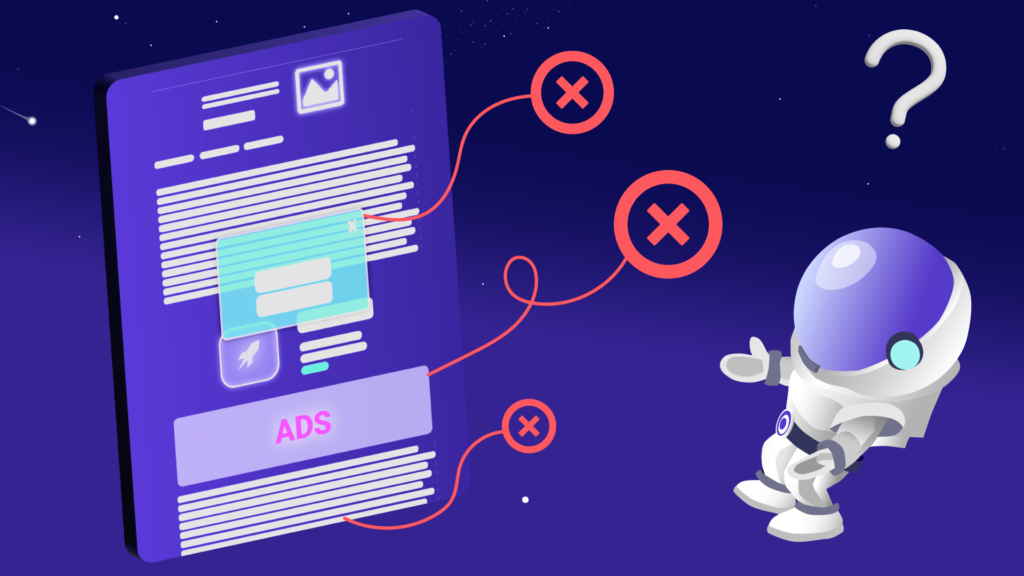In today’s SEO landscape, simple creating content doesn’t move the needle. The content needs to deliver real value to the reader.
And if your target audience has a hard time reading and understanding your content, who is it useful for then?
Readability plays a major role in content marketing and can greatly improve your SEO results. In general, readability is the ability of your target audience to digest your content. High readability allows you to attract attention, establish authority, and communicate your message effectively.
Naturally, you want your readers to understand your content and take something away with them. You want your content to be useful and have a purpose rather than merely exist on your site. And having the right writing style and a specific goal with your content ensures that, among other things, you build rapport with potential customers.
If you’re writing informational articles, your goal is to leave the user with a level of understanding. You want to answer their question. Likewise, when creating essential landing pages, you understand their purpose is to establish yourself as the right solution in potential customers’ eyes. With that, let’s look at exactly how different levels of readability can influence the decision Google makes on where to rank your website.

How does readability affect SEO, and why is it important?
To enable your users to achieve their goals, users must feel invited by your page layout and content. Equally so, they must feel competent that they understand your page’s context. Without a good structure, practical page layout, and high reading comprehension, your users won’t engage with your content. Ultimately, this will lower your conversion rates and hurt your Google rankings. Let me elaborate.
Readability is both a direct factor and an indirect factor for SEO. Good readability helps your target audience digest your content, thus influencing their behavior signals, which Google measures. Google prefers content with high readability that provides a satisfactory experience to the end-user.
From B. J. Fogg’s behavior model, we know that two factors determine user behavior – motivation and ability. Readability plays a critical role in SEO because both of these factors influence it. In the context of readability for SEO, the Fogg behavior model translates to:
- How easy it is to understand your content
- How easy it is to navigate your content
Firstly, suppose you have well-formulated sentences and an intriguing plot. In that case, you are directly influencing the reader’s motivation – because they can understand your content. Good content helps motivate them to continue reading after the first couple of sentences.
Similarly, pages with good formatting and visual style increase the reader’s ability (i.e., ease-of-use) to navigate the information you present them.
Indirect ranking factor
The level of readability on your site affects the behaviors users exhibit when navigating the web. Because UX is a defining factor for ranking in Google, the degree of readability affects your SEO both:
- from a stylistic and formatting point of view
- from the level of reading complexity
If users can quickly navigate your page’s contents and find what they need, they are more likely to be satisfied with it. If they don’t, they are going to look for other sources. Hence, the quality and readability of the content change how users behave on your website.
Suppose users come on your site, quickly see they can’t find the solution to their problems, and bounce back looking for another result. In that case, Google considers this as an indicator that your site isn’t satisfactory enough. Eventually, this will cost you rankings.
On the other hand, if your target customers visit your site and quickly find what they need, they will stay there longer and engage with more content. Similarly, Google sees those behaviors, too – but this time takes them as signals that you offer useful, satisfactory information that users want to see. With this, they will eventually promote your page to higher positions in the search results.
Direct ranking factor
Additionally, the simpler, more diverse, and grammatically correct your content is, the easier it is to rank.
That is not to say that Google doesn’t show high-level, complex content in the search results. Indeed, it does so, but this happens when such content is needed. For most instances, easy-to-read content does better for the simple reason users expect and prefer that.
Think of it this way: Proofread content doesn’t necessarily do better in Google, but low-quality content containing errors certainly performs worse. Well-written content works like “a standard” for Google, and not meeting these standards will negatively impact your SEO.
What website factors affect readability?
Gone are the days when users were content with simple HTML & CSS. Modern websites pack many features – some of which help your visitors while others hurt their experience. However, consumers have changed, too, along with their expectations and behaviors. Compared to just a decade ago, most users nowadays browse the internet via a mobile device instead of a desktop machine. Whether faced with a website redesign or simply planning out your new venture, consider these ten factors that affect website readability.
10 factors strongly affecting website readability:
1. Visuals affect your content’s assimilation
The pictures and videos you use on your pages influence how easy it is for users to understand your content. Strategically placing visuals also helps paint a better picture instead of using words – which is beneficial in many instances and content types.
2. Vocabulary ensures the clarity of your texts
Firstly, you need to use “the right words” depending on what content you’re creating, which are essentially the words your target audience uses. Doing so helps you connect with your audience and makes them more receptive to your message. Secondly, using complex language can directly hurt your readability since it makes your texts hard to understand.
3. Grammar influences your article’s correctness
Using proper grammar is essential in getting people to understand your content. Texts with lousy grammar are easy to misunderstand – which lowers your readability and impacts the user experience.
Now, Google has explicitly said that, on its own, grammar will not affect your rankings. Therefore, grammar itself is not a ranking factor. However, it’s a contributing factor to your overall readability, and therefore, it can indirectly influence your rankings.
4. Sentence length help you deliver your message
Having shorter sentences makes your texts more digestible to the user. It’s easier to understand the meaning of compact sentences. Additionally, readers can process your content in a sequence and more easily follow through instead of losing the main points along the lines.
5. Paragraph length strongly affects readability
Similarly, short paragraphs help guide the eye better. Consequently, this improves the readability of your texts by making them more structured and skimmable. With well-formatted content, readers can also quickly return to where they left off if they get interrupted while reading your content.
The easiest way to achieve this is by splitting sentences that carry new meaning to the text into new paragraphs. Alternatively, stick to a rule of thumb to only clump together no more than 2-3 sentences at a time. For example, we formatted this very paragraph apart from the previous one using those two tips.
6. Headings make your texts digestible

Using headings that stand out, combined with well-formatted texts, increases users’ ability to read through. Additionally, writing good headings also get your users to be more engaged with the content – as they are intrigued in figuring out what’s coming next. Again, this increases your reader’s motivation to stay on the site for longer.
Additionally, the content you put in your headings directly affects what Google takes away from your article. This directly influences what you’re going to rank for.
7. Fonts increase or decrease readability
The fonts that you use also influence how readable your texts are. Standard, easy-to-read fonts help the user navigate through the content easier.
Using more creative fonts that are harder to read can technically improve the reader’s understanding of the content. That’s because they need to invest more energy in reading – which primes them to pay more attention.
However, approach that with caution. Content should only be hard to read when the information in it is essential. For example, the font used on exam papers can directly influence how students perform.
But an article about dolphins doesn’t (at least shouldn’t) need to be analyzed deeply – which can hurt how long people stay on your site. Because of that, it’s best to stick to simple fonts we have an easy time reading. For further learnings, this article takes a deep dive into picking the right font.
8. Website colors visually guide the eye
The colors present on your website are more important than you might think. Some colors strain the eye and make it harder for users to focus. Similarly, in other instances, you might have unconsciously picked non-contrasting colors, yet again making your pages hard to read.
That is not to say you should keep your pages blank and boring. Color can be beneficial in both guiding the eye and priming the users to expect a specific action. For example, the Grammarly app showcases that beautifully, using different colors to annotate various errors it catches in your writing.
9. Page layout is critical in engaging users
The layout of the page is also critical to how well visitors accept your content and message. A confusing layout and elements interfering with the page can make it harder for users to read your content. For example, such a factor could be horizontal scrolling for texts that don’t fit well in their bounding box.
Seemingly smaller disturbances such as too small or too large margins between paragraphs can also be equally unpleasant. If the user has to scroll excessively to get to the article’s main point, they will likely not commit to doing that. Here’s one of our other posts that explains how you can improve your landing page layout specifically for SEO.
10. Intrusive pop-ups greatly impact User Experience
Lastly, factors that interrupt the experience turn some users away. Such could be intrusive pop-ups, website chatbot messages, notification prompts, among others. Consequently, this can lead to lower user engagement on your pages, which Google considers when evaluating a website’s quality.

FAQ
How do different search engines besides Google evaluate and prioritize readability in their ranking algorithms?
Different search engines use various algorithms to evaluate and rank websites, and while Google is known for prioritizing user experience, including readability, other search engines like Bing or DuckDuckGo may have slightly different criteria. However, the core principle across most search engines is enhancing the user’s search experience, which likely includes aspects of readability. Each engine may weigh readability differently or use unique metrics to assess it, but the overall trend emphasizes clear, accessible content as beneficial for SEO. For specific details on how each engine operates, consulting their webmaster guidelines can provide more insights.
Are there any tools recommended specifically for measuring and improving the readability of website content?
For tools specifically designed to measure and improve readability, there are several options available. Tools like Hemingway Editor and Grammarly offer insights into sentence complexity, word choice, and grammar, which can help make text more understandable and engaging. Additionally, Readable and the Yoast SEO plugin can analyze web content for readability and SEO friendliness, providing scores and suggestions for improvement. These tools can guide content creators in making their websites more accessible and potentially improving their search engine rankings.
What are the most common readability mistakes websites make that negatively impact their SEO, and how can these be avoided?
Regarding common readability mistakes, they often include using overly complex sentences, employing technical jargon without explanation, and lacking clear structure. These mistakes can make content hard to understand for a general audience, negatively impacting SEO by reducing user engagement and increasing bounce rates. To avoid these pitfalls, it’s advisable to use simple language, explain technical terms, and organize content with headings, short paragraphs, and lists where appropriate. This approach makes the content more accessible to a wider audience, enhancing user experience and SEO.

